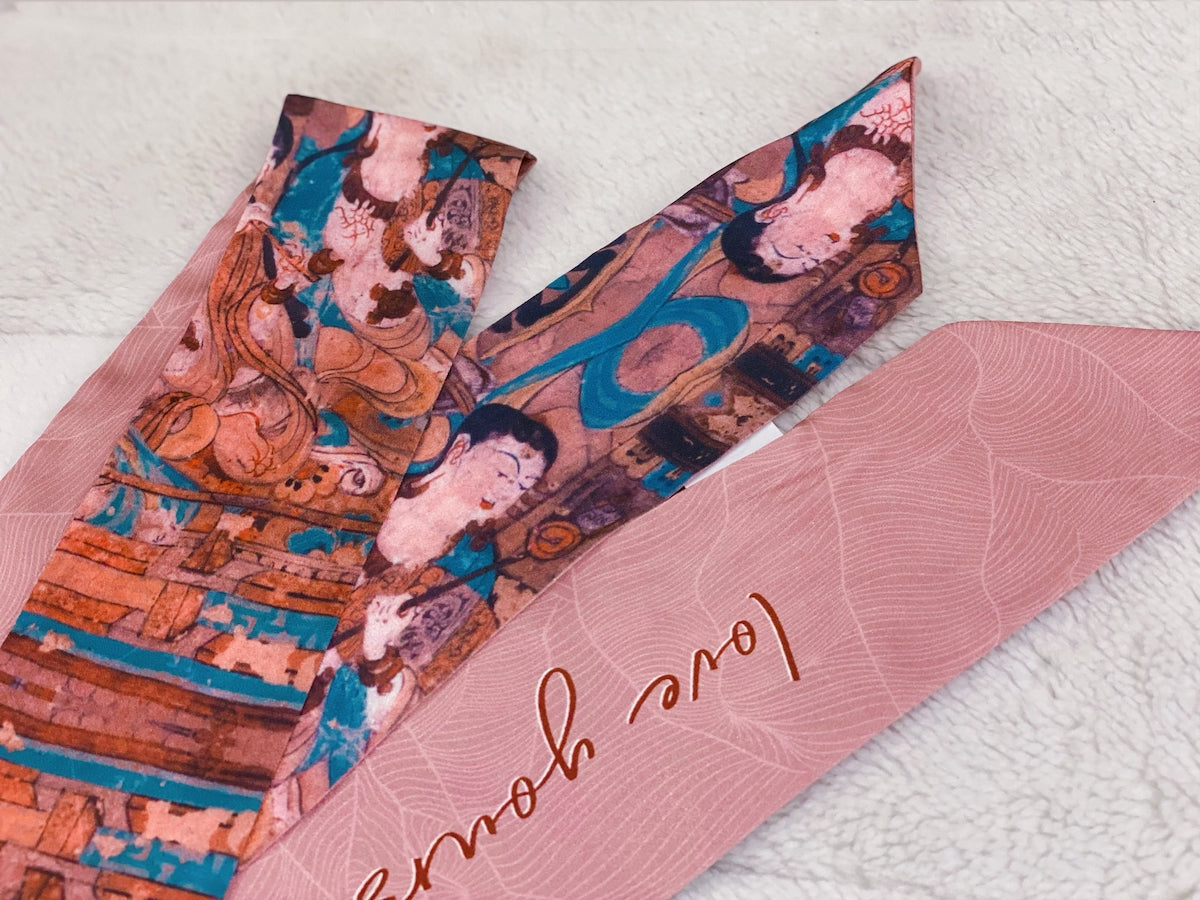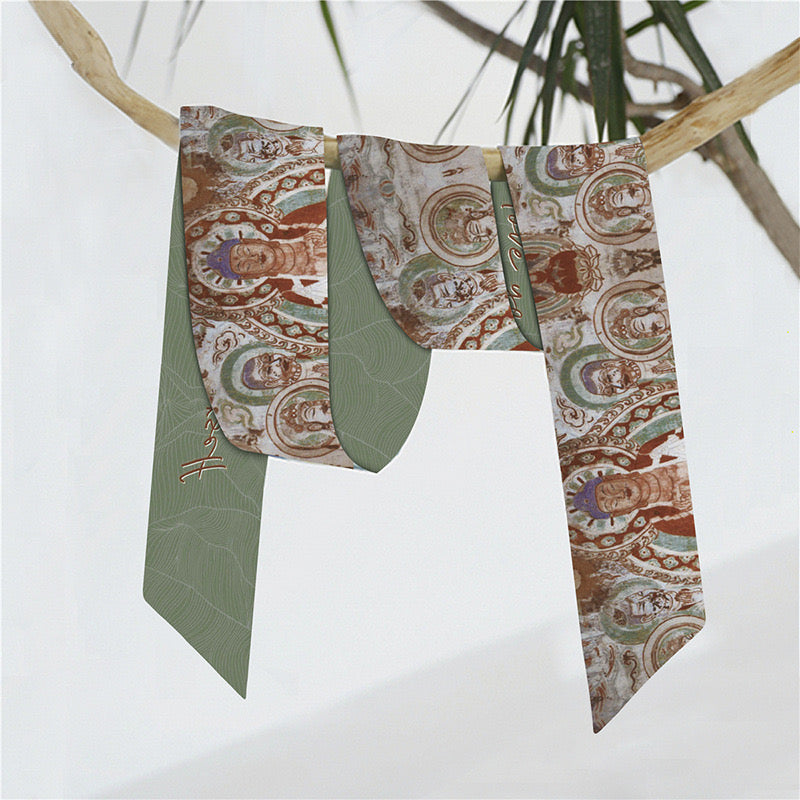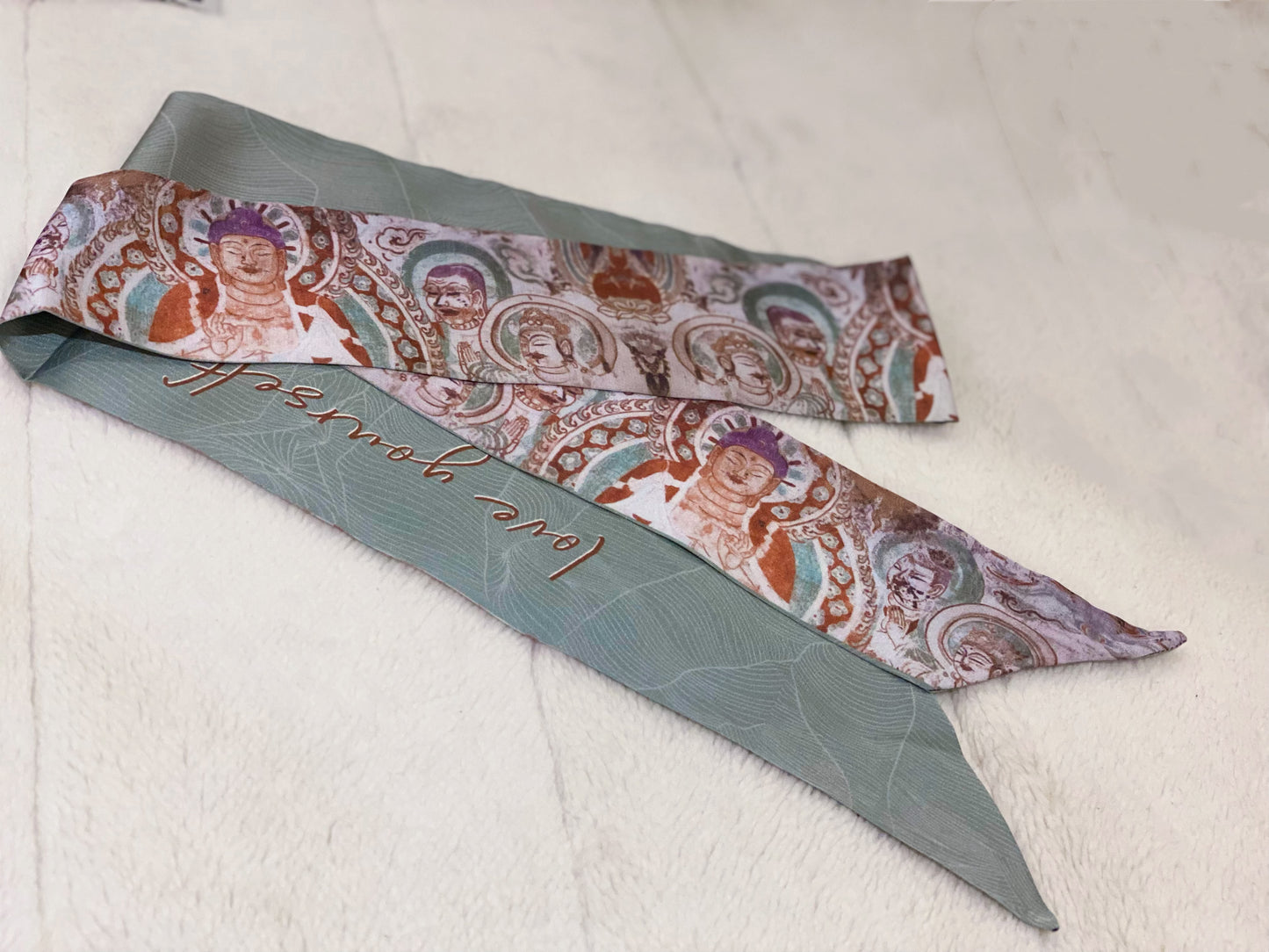Now, let's take a closer look at the caves in Dunhuang.
The Mogao Caves, also known as the Thousand Buddha Grottoes, encompass an impressive collection of 735 caves, preserving over 45,000 square meters of murals and more than 2,400 coloured sculptures. In 1987, the Mogao Caves were rightfully recognised as a UNESCO World Heritage site. Revered as a microcosm of Chinese grotto art's development and evolution, they hold a prominent place in art history.
Dunhuang Aesthetics

These Caves integrate architecture, sculpture, and murals into a mesmerising three-dimensional masterpiece. Each of these art forms has influenced contemporary art and heightened people's appreciation for religious art.
Notably, the Dunhuang murals have garnered a devoted following among scholars who study the ancient techniques, interpret the stories depicted in the murals, and seek to replicate the exquisite artwork. This resurgence of interest has resulted in the incorporation of more and more motifs from the Dunhuang murals into modern art and design, earning it the title of "Dunhuang aesthetics."
The Flying Apsaras

Within Buddhism, the Flying Apsaras (known as Fei Tian 飞天 in Chinese) hold a special place as an art form rich in aesthetic implications. These ethereal beings grace the murals of the Mogao Caves. Over time, influenced by social, economic, and cultural developments, the artistic representation of the Flying Apsaras has undergone significant transformations.
The motif traces its roots back to the Northern Liang period when the Fei Tian image displayed distinct exotic characteristics, with predominantly male figures. However, within the preserved Tang Dynasty caves of Mogao, where 236 caves exist, the Fei Tian is mostly depicted as a bodhisattva with a female form.
The Dunhuang Flying Apsaras are not merely cultural images; they embody a fusion of Indian, Central Asian, and Chinese cultures. Integrating elements from Buddhism, Daoism, as well as Central Asian and Chinese depictions of celestial beings, the Dunhuang Flying Apsaras showcase unique Chinese features.
Unlike traditional portrayals of winged celestial beings surrounded by halos and clouds, the Dunhuang Flying Apsaras glide gracefully through the air, draped in flowing robes and fluttering ribbons. Their depiction represents a masterpiece of Chinese art and a remarkable achievement in the history of global art.
Zao Jing
In addition to the surrounding murals, the ceilings of the Dunhuang grottoes also captivate visitors. Ceilings, commonly known as the uppermost part of a building, hold a special significance in Dunhuang's grottoes.

Traditional Chinese wooden architecture features a coffered ceiling called "Zao Jing" (藻井), which consists of nested geometric patterns resembling a well. These ceilings are often adorned with floral patterns, carvings, or paintings. In wooden architecture, the Zaojing serves a dual purpose: concealing the roof beams to enhance the roof's beauty and symbolising the "water-fire" conflict while protecting the building from fire.
Within the Dunhuang grottoes, more than 400 Zaojing are found and are constructed at the highest points of the grottoes and adorned with aquatic plant motifs such as lotus (a prominent flower in Buddhism symbolising dignity and wisdom), water chestnut, and water lily.
The purpose of these decorations is to ward off evil spirits and symbolise the "Pure Land" where the deceased will reside in Buddhism. Remarkably, due to their elevated location within the grottoes, the Zaojing have suffered minimal damage from sandstorms in Dunhuang, allowing visitors to witness the well-preserved colours and patterns of these coffered ceiling decorations.
Dunhuang Motifs in Modern Designs
Today, in China, Dunhuang motifs serve as a popular source of inspiration for young designers seeking to incorporate Dunhuang art into their products, such as earrings, necklaces, clothing, and packaging. Through this integration, traditional culture gains new meaning and resonates with younger generations.

The graceful movements and distinctive postures of the Flying Apsaras as they dance with silk ribbons symbolise freedom and dynamic vitality, making Dunhuang art increasingly relevant in contemporary times.




Think about paying a visit to the Mogao Caves, why not?
Dunhuang's rich history, cultural significance, and breathtaking artwork continue to captivate audiences worldwide. It stands as a testament to the enduring legacy of Chinese art and the ability of ancient masterpieces to inspire contemporary creativity and appreciation.
A visit to the Mogao Caves offers a profound journey through time, allowing visitors to immerse themselves in the mystery and aesthetics of Dunhuang.
However, we understand that embarking on a long-haul journey may require extensive planning and energy. But fear not, for you can still experience the beauty of this amazing place reading this series of blog articles featuring the mysterious beauty of Dunhuang.
Or, take a moment to browse through our catalogue, where we have carefully selected some exquisite Dunhuang-inspired products just for you. Immerse yourself in the allure and elegance of Dunhuang's motifs with our unique collection. Let the spirit of Dunhuang accompany you on your own artistic journey, wherever you may be.
By: Angel Ma












